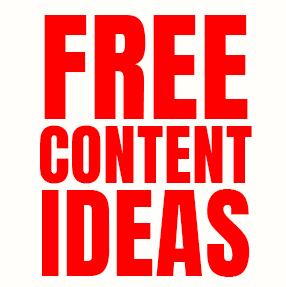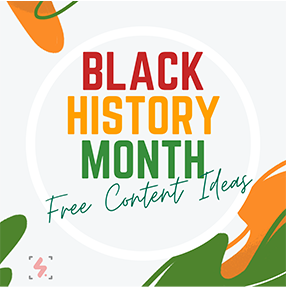A Free course for New and Continuing Video & Film Teachers
Are you a new teacher looking for curriculum help in a Video 1 classroom? Or perhaps you’re a continuing teacher looking for some free class resources or teaching ideas?
If you are either of these things, there is a new, free resource made just for you.
At the following Canvas link, you’ll find a free, full Video 1 curriculum built specifically for sharing with teachers of all skill levels:
https://lor.instructure.com/resources/8a21f2c3bbd24e318ad715b74fc0c5d5?shared
This course includes high-quality, uniquely made video tutorials covering video topics, activities for an entire Video 1 course semester, project and assignment ideas, instructions for how teachers can best implement the curriculum in their own classroom, timeline suggestions for implementing activities, and more.
Check out the course at the link above directly, or read on in this article for a more detailed explanation of the course and its purpose!
During my first year as a teacher, I realized that making a curriculum for several new classes all at once was no small feat. What’s more, trying to make high quality instructional content to support my classroom activities and teacher took a ton of time. I tried to use free YouTube videos to help limit how much content or instruction I needed to directly make myself, but I soon realized that YouTube videos, while great, aren’t always the most effective. Many free videos did a wonderful job covering a certain topic I needed in my classroom, but they were often either under-explained, over-explained, or explained the wrong aspects of the lesson that I wanted the tutorials to help teach my students. Overall, they were helpful but cumbersome and pretty unrefined.
Luckily, right before I became a first-year teacher, I was a student teacher to a high school teacher who demonstrated a very interesting system to me. In this teacher’s classroom, rather than just teach from a podium or teach using various YouTube videos for student tutorials, this teacher made his own video tutorials and matched the tutorials to the lessons and activities he taught in his classroom. The method was effective, synergistic, and highly supportive to both him and his students. When he covered a new topic in his class, he also had pre-made videos of him teaching the same topic. This allowed him to give students more autonomy in their learning while still providing them resources he knew would teach them correctly and effectively. The reason this helped me out - this mentor teacher was willing to share his curriculum and resources with me and other teachers my first year teaching.
All of a sudden after accessing these materials, I no longer had to stress about how I was going to structure my lessons or find useful resources to support my teaching. Instead, I was able to put my time into refining how I personally taught the class and worked with my students. I knew that this was how I wanted to conduct my own classroom.
As I moved on from using my mentor teacher’s materials, I was able to take notes on what did and didn’t work for me from his course. I also took note of what I saw did or didn’t work for my students, personally. As time moved on, I began to reshape the course to fit how I thought things would be best, and I began to make my own tutorials, where possible. Eventually, I came up with a curriculum I found to be highly effective. I began winning national competitions, and my students tested extremely well every semester at our state exams, so I began to feel good about where my own classroom curriculum was at.
One problem still bothered me though - other video teachers still seemed so stressed all of the time. It has seemed to me that finding good teaching resources, finding good project ideas, and learning how to structure a fluid, whole curriculum has been difficult for many video teachers. This seems to happen due to two primary reasons: 1) Most video teachers do not come from a teaching background. They were once industry professionals who turned toward teaching at one point for a career change and decided they loved what they found. 2) Many video teachers are originally teachers for other subjects whose school asked them to pick up a new subject, namely video. They understand teaching well but may not have a strong background in video production itself.
Teaching video requires both a teaching and technical background. Because so many teachers come from one of the two scenarios above, there are many video teachers who are still looking for help in one or more aspects of video - and here’s where my new curriculum comes in.
Because I benefited so much from support and resources from other teachers myself, I determined to create a Video 1 curriculum designed specifically for sharing with other teachers. Due to problem two stated above (i.e. many teachers teaching video do not have a video background), I wanted to make the course as full-proof as possible. So, I developed the course to have a tutorial or pre-made video teaching every single topic covered, to have student-driven activities, to have self and peer evaluations for learning, and to lead students from video principle to video principle in a manner logical to a brand-new video maker. This course supports an almost 100% student-led classroom (if a teacher so chooses), and it also supports a more teacher-dependent classroom - whatever suits the interest and skill level of the teacher involved. Either way, if you are looking for help teaching a video class, or even just portions of one, this course was made with you in mind.
So please, go check it out and feel free to make it your own! I loved the help I received in building my video production curriculum, so I hope you do too.
Meet the Author, Joshua Luchs
Joshua Luchs is a Video Productions teacher at Riverton High School in Utah. He has a Master's Degree in Technology and Engineering Education with an emphasis in Instructional Psychology, and he loves the feeling of teaching and empowering young students. He lives in Utah with his wife and young son, and they love to the lifestyle that teaching helps provide them.









Got shaky footage? No problem! In this quick tutorial, learn how to use Warp Stabilizer in Adobe Premiere Pro to smooth out your shots effortlessly.